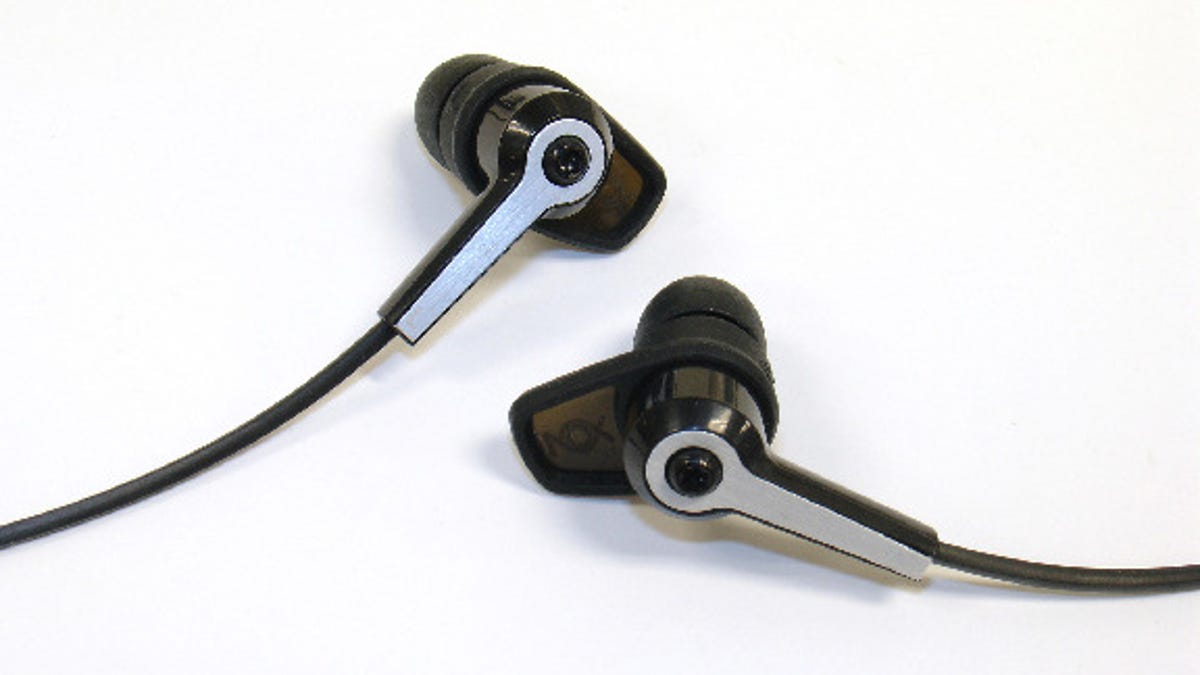NOX's ridiculously good $79 in-ear headphone
NOX Audio may be a new name in the headphone market, but its Scout in-ear monitor sounds amazing for the money.

I think we're entering the golden age of headphone design. Over the last few years the competition's heated up and at nearly every price level, headphone performance standards are improving at a fast and furious rate. For example, the TDK EB900 in-ear headphone I heard at the CNET office a few weeks ago were pretty amazing for around $100, but the all-new NOX Audio Scout is better, a lot better. Headquartered in City of Industry, CA, NOX Audio was founded in 2009.
The superlightweight design is extremely comfortable, and while my ears are sometimes very fussy about getting a tight seal for best bass response, I had no trouble with the Scout's silicone eartips.
The design features "balanced armature technology," which is rarely seen in headphones in the Scout's price class (I don't know of any others). The Scout's cable has an inline omnidirectional microphone, and according to the Scout press release, "the world's smallest send/end button, making it an ideal device for cell phones, portable media players and gaming handhelds." Best of all, the Scout's flat cable was the least tangle-prone headphone wire I've ever used. Jumble it up any which way, shove it into your pocket, and it'll never tie itself into knots. That's a first!
I compared the Scout with a set of $180 Monster Turbine in-ear headphones (the base model Turbine) which I've always really loved. The Turbine's big bass came booming through on Radiohead's "Amnesiac" album, but switching over to the Scout clarified not only the bass, but the midrange and treble were more transparent. The drums' cymbals shimmer and sparkle were much superior, each drum whack was more precisely rendered, and the bass pitches were easier to follow on the Scout.
I heard similar distinctions with Willie Nelson's recent "Country Music" album. The banjo on "Satan Your Kingdom Must Come Down" was perfectly clear, and each note's attack and tone were pristine on the Scout; the Turbine softened the tonal balance somewhat. The Turbine's richer tone will no doubt appeal to some tastes, but I think the Scout is more accurate. The Scout had a deeper soundstage compared to the Turbine, which seemed to spatially flatten the sound of the Nelson album. The one decisive win for the Turbine was its noise isolating abilities on the NYC subway; the Scout wasn't as effective as the Turbine.
The Scout's bass is really something special for an under $100 in-ear headphone. It's extremely well-defined, and when the recording has really deep, very low frequency bass, the Scout reproduces it. Brian Eno's new "Small Craft on a Milk Sea" CD has that kind of bass, and the Scout let me hear it.
NOX is off to a grand start, I'm already a big fan.

